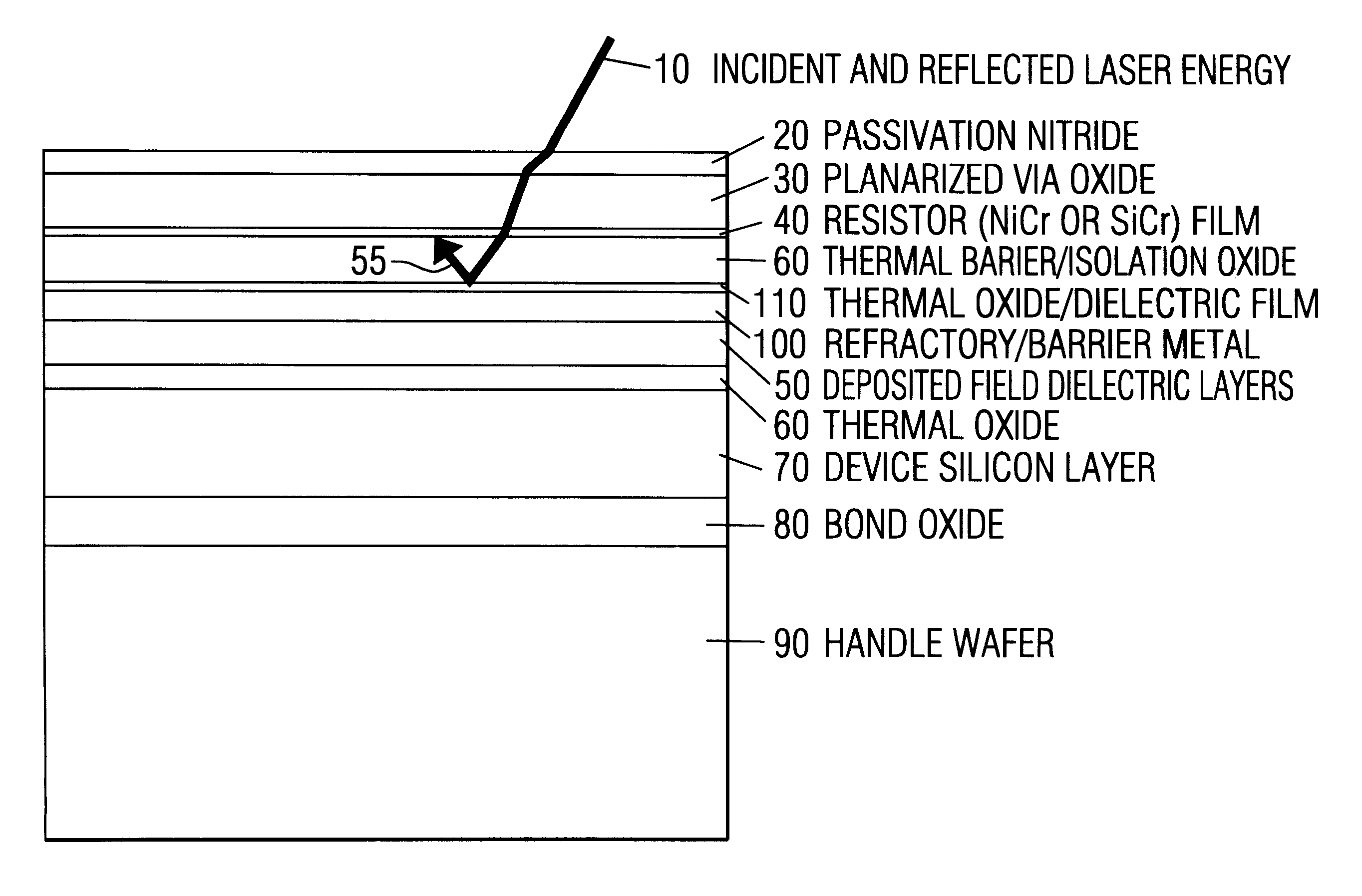Use of barrier refractive or anti-reflective layer to improve laser trim characteristics of thin film resistors
a thin film resistor and anti-reflective layer technology, applied in the field of thin film resistor laser trim characteristics improvement, can solve the problems of many production wafer lots being delayed, poor laser kerf quality, and inability to accurately measure the laser trim quality of precision thin film resistors. , to achieve the effect of reducing inaccuracy in the behavior of thin film resistor
- Summary
- Abstract
- Description
- Claims
- Application Information
AI Technical Summary
Benefits of technology
Problems solved by technology
Method used
Image
Examples
Embodiment Construction
Refer to FIG. 2. The integrated circuit incorporates a device silicon layer 70 which includes one or more semiconductor devices or an integrated circuit. Such devices and integrated circuits and their respective fabrications are conventional. The device substrate 70 may or may not have a handle substrate 90 that is oxide bonded 80 to the backside of the device substrate 70. After formation of the devices or integrated circuit, the devices or integrated circuit are covered with a suitable insulators such as deposited or thermal oxides 50,60. These layers are covered by the refractory / barrier layer 100. In a device made in accordance with the invention such insulator layers are required to separate the devices from refractory barrier metal 100 which may be conductive. The layer 100 is deposited over the substrate and comprises a refractory material such as tungsten, titanium, molybdenum and refractory suicides such as TiSi.sub.2.sup.13,14, CoSi.sub.2.sup.15, MoSi.sub.2, TaSi.sub.2 and...
PUM
| Property | Measurement | Unit |
|---|---|---|
| wavelength | aaaaa | aaaaa |
| wavelength | aaaaa | aaaaa |
| wavelength | aaaaa | aaaaa |
Abstract
Description
Claims
Application Information
 Login to View More
Login to View More - R&D
- Intellectual Property
- Life Sciences
- Materials
- Tech Scout
- Unparalleled Data Quality
- Higher Quality Content
- 60% Fewer Hallucinations
Browse by: Latest US Patents, China's latest patents, Technical Efficacy Thesaurus, Application Domain, Technology Topic, Popular Technical Reports.
© 2025 PatSnap. All rights reserved.Legal|Privacy policy|Modern Slavery Act Transparency Statement|Sitemap|About US| Contact US: help@patsnap.com


